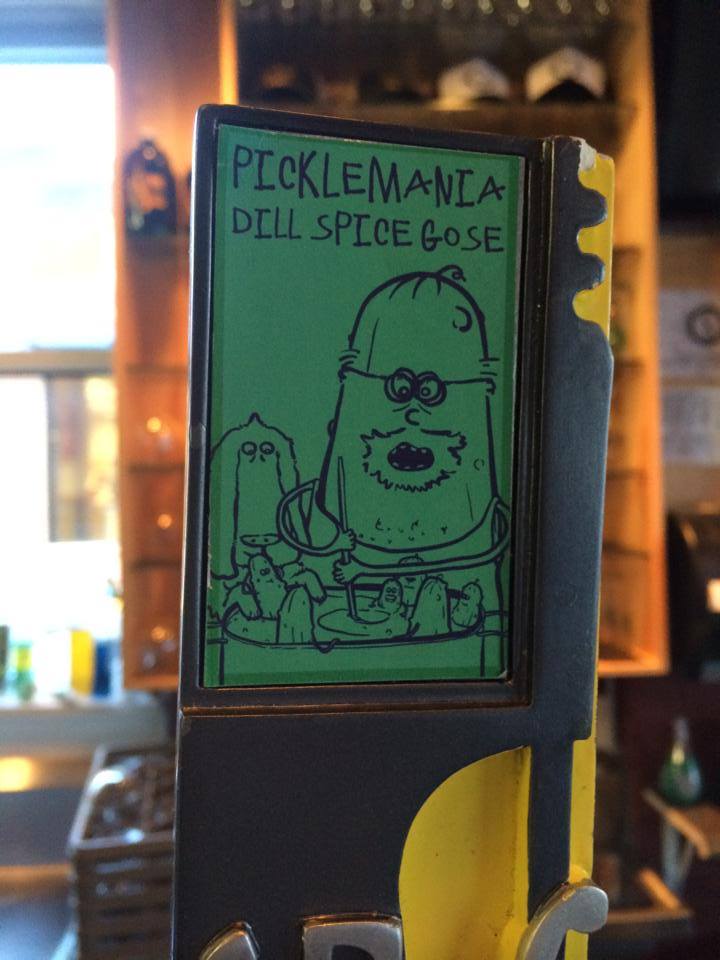
The American craft beer scene has experienced a recent surge in interest for sour beers, and the ensuing explosion of innovation has left few beer enthusiasts unaffected. A number of breweries are participating in this ever-growing trend, and many are experimenting with various bacteria, fruit additions, brewing processes, and more. One particularly intriguing and exciting side effect of this movement has been the resurgence of a number of styles that were previously in danger of slipping into obsolescence. That being said, there is one style in particular that has piqued my interest and usurped the vast majority of my brewing focus and beer budget. The effervescent, sour, and salty delight that is Gose.
The History
Gose originated centuries ago in the town of Goslar, Germany and took its name from a river that runs through the area. Goslar was home to a number of large salt deposits and the concomitant integration of this mineral into the groundwater laid the foundation for a truly unique beer style. Any degree of noticeable salinity, however, would have seemed out of place in the context of the beer styles of the day. The local Brauereien circumvented this issue by producing a light and subtly salty brew that featured a pronounced tartness from lactic acid bacteria and showed no discernable hop character. Gose was the result of this ingenuity, and it was brewed in Goslar until it slowly lost favor in the late 18th and early 19th centuries. As it turned out, however, the style was a big hit in Leipzig, and residents of that city were more than willing to carry the torch after the last Gose Brauerei closed in Goslar in the year 1826 (Ref. 1). Gose remained in production in Leipzig, Germany until World War II demanded the diversion of grain from brewing to bread making.
The Gose story is not a particularly exciting one following the end of the war, and one could have considered the style all but moribund. There have only been a handful of people responsible for keeping Gose alive from the 50’s until now, including in large part the Bayerischer Bahnhof Gasthaus & Gosebrauerei in Leipzig. (Ref. 2) Gose has always been hard to come by, and the Bahnhof Gose has long been, for all intents and purposes, the only Gose to be found. A Brew Your Own article published in 2011 stated that it was still “extremely hard to find outside of Germany,” and that was just four years ago. (Ref. 3). Fast forward to 2015, and there are bottle shops that can’t keep Gose on the shelf. How is that possible? The recent interest in acidic beers has been growing ever since 2011, and at a rate that begs the question: “Is sour the new hoppy?” and, if so, “Is Gose the new IPA?”
The Style
Gose is a very light and crisp style with a bright acidity, subtle salinity, and balanced floral character from coriander. Choosing how much salt to use is up to the brewer, but the final product should be neither devoid of nor dominated by salinity. Coriander should be present but not to the point where it can be identified, and hops shouldn’t be present at all. The acidity is traditionally achieved through a souring process that relies on a strain, or strains, of lactobacillus. The brewer will usually choose which method they want to use for souring their beer based on their equipment and its capabilities. There are currently a number of innovative new souring techniques that are being explored by professional and amateur brewers alike, but we’ll discuss those in the Part 2.
There are a number of exceptional examples of this style available on the market, and it’s possible that one of your local breweries has given one a go. My favorite go-to Gose is Anderson Valley’s The Kimmie, The Yink, and The Holy Gose. It’s acidic to the point of being refreshing but not enough to impede rapid consumption, just salty enough to show, and has a touch of citrus to round it out. Westbrook Brewing of South Carolina also makes an excellent, albeit quite tart, example of the style, and Boulevard Brewing has recently released one brewed with hibiscus. The most interesting spin on the concept to date has to be Steel String Brewery’s Picklemania Gose, which relies on the inherent salinity of the style and pairs it with the intense flavor of dill. Whether you brew it to style or decide to doctor it up, Gose is a stand-alone in the beer world and one I hope is here to stay.
Part II…
I’ve obviously taken an interest in Gose, and in an effort to curb my spending on commercially produced examples I have decided to begin brewing them myself. The decision to do so has led me down the slippery slope of investigating every strain/source of lactobacillus you can use, compatible strains of saccharomyces, souring methods, temperatures, and more. The end goal being the hope that I have the necessary understanding of the processes and the variables at play such that I can execute them successfully and still exert some small personal touch. Stay tuned for a more focused discussion regarding the various methods and microogranisms that can be used in the production of Gose.
References
- Brew Your Own Magazine. Issue: Jan/Feb 2005
- Brewing with Wheat. Stan Hieronymous (should be on Webstore)
- Brew Your Own Magazine. Issue: May/Jun 2011
For more information on the history of Gose, refer to Stan Hieronymous’ Brewing with Wheat.

Leave a Reply